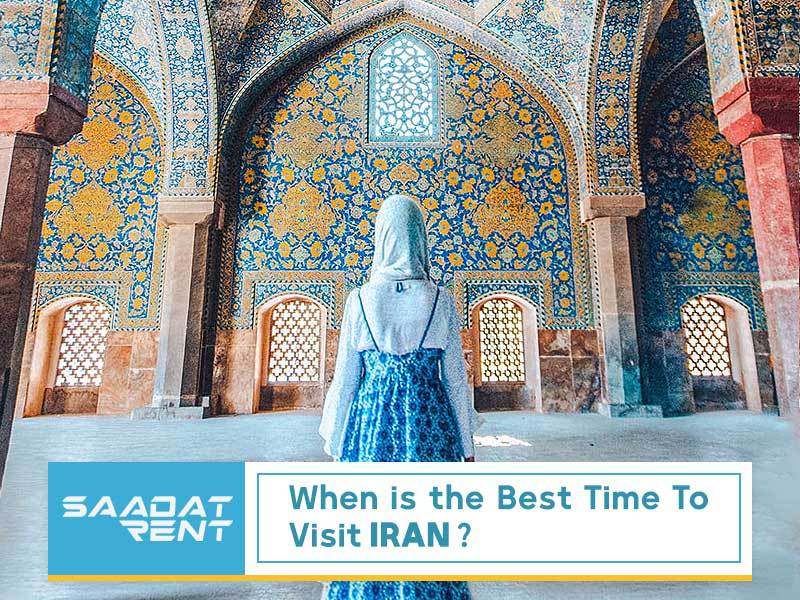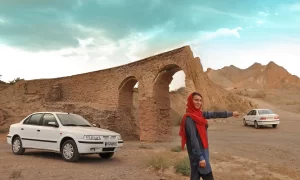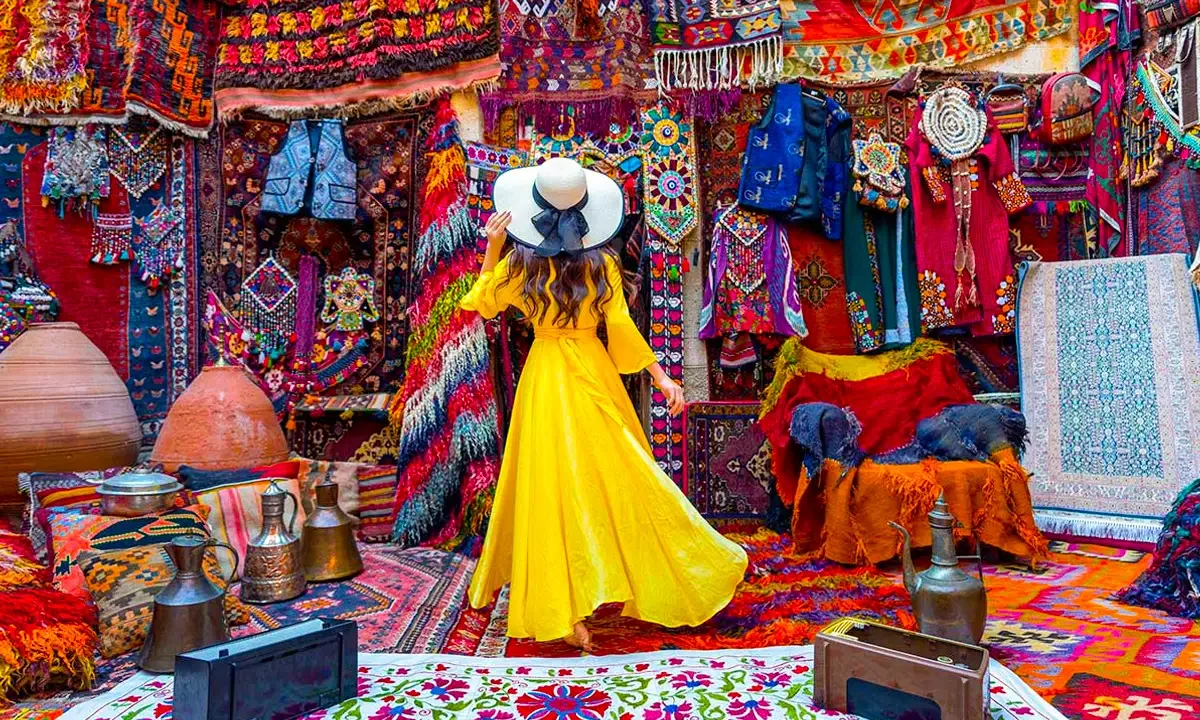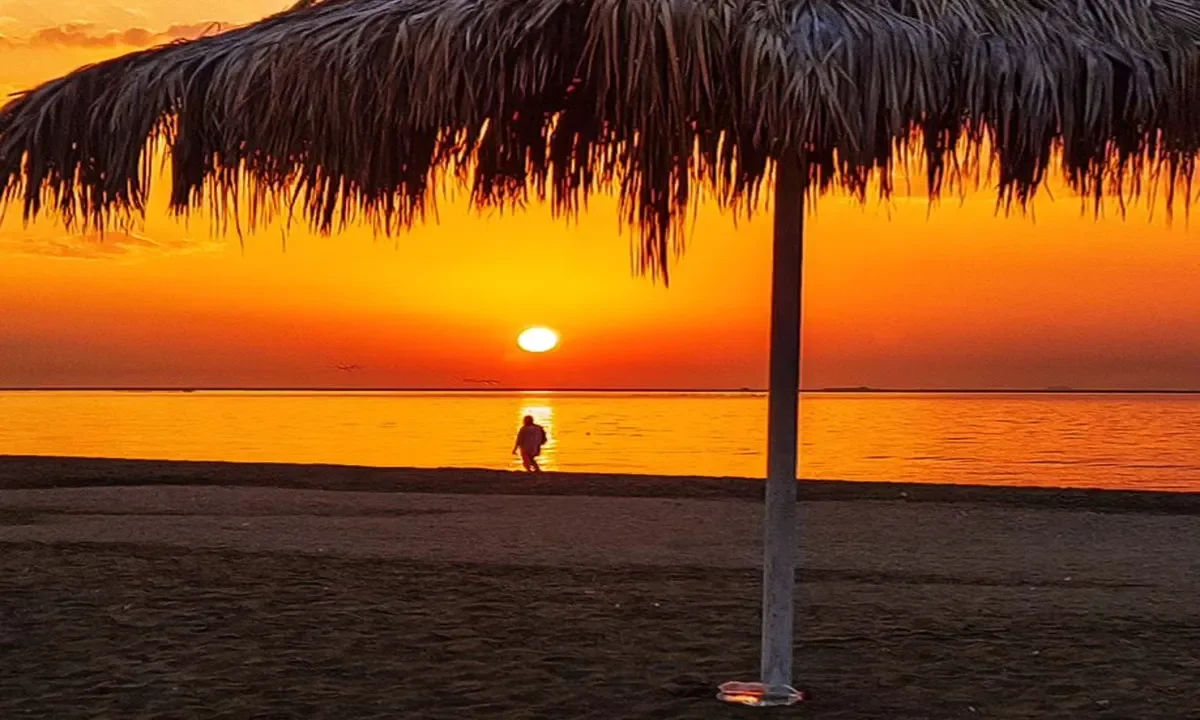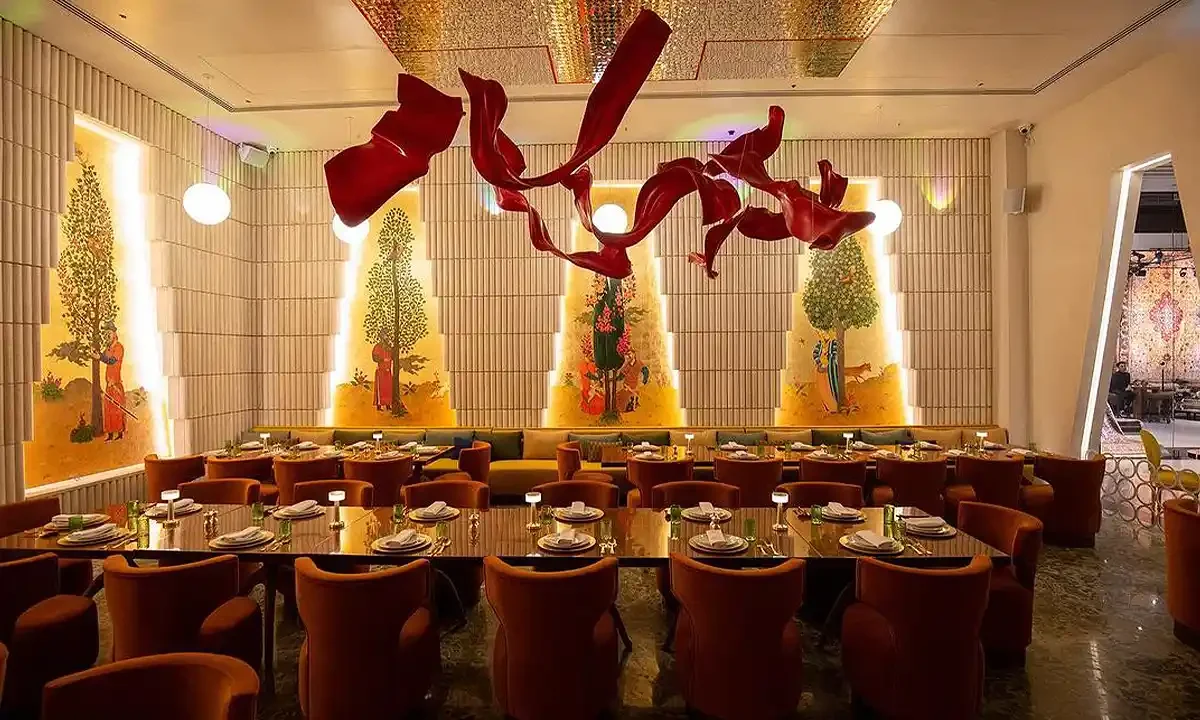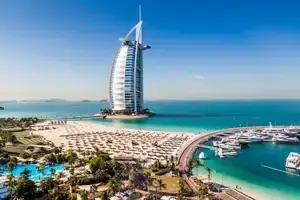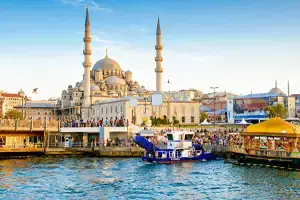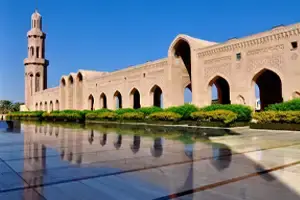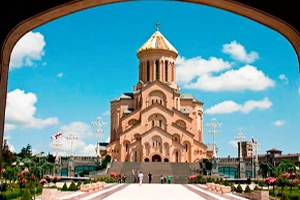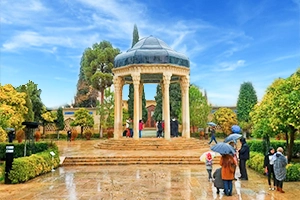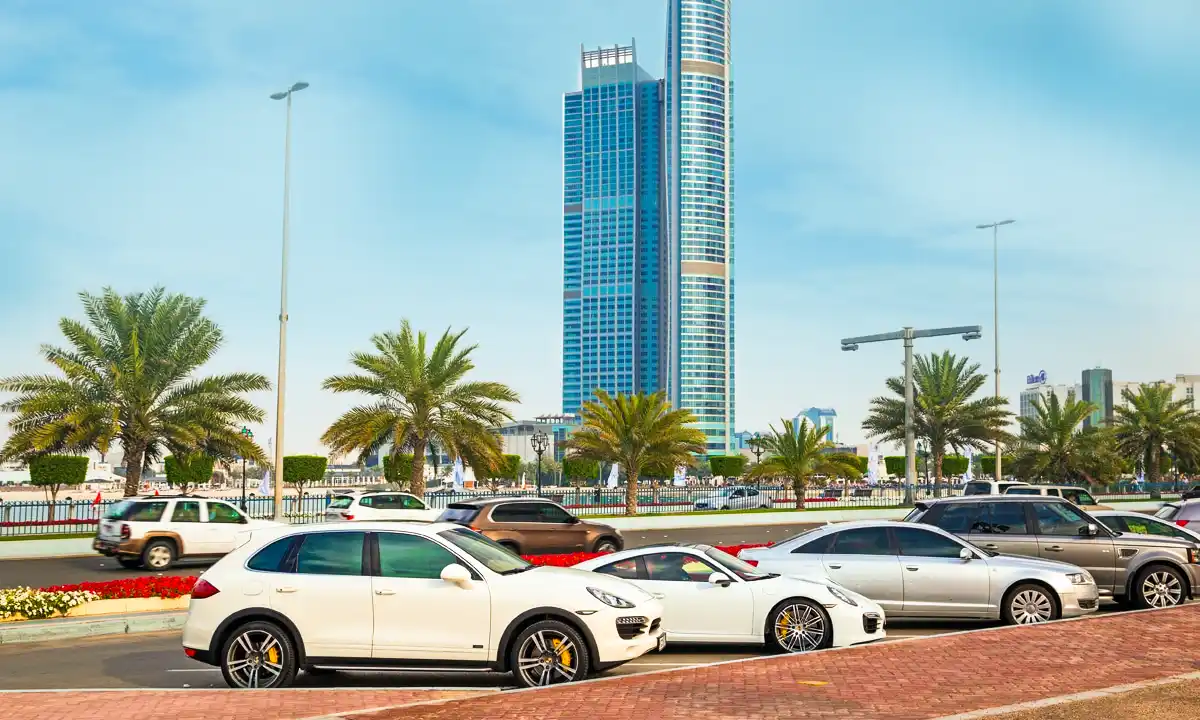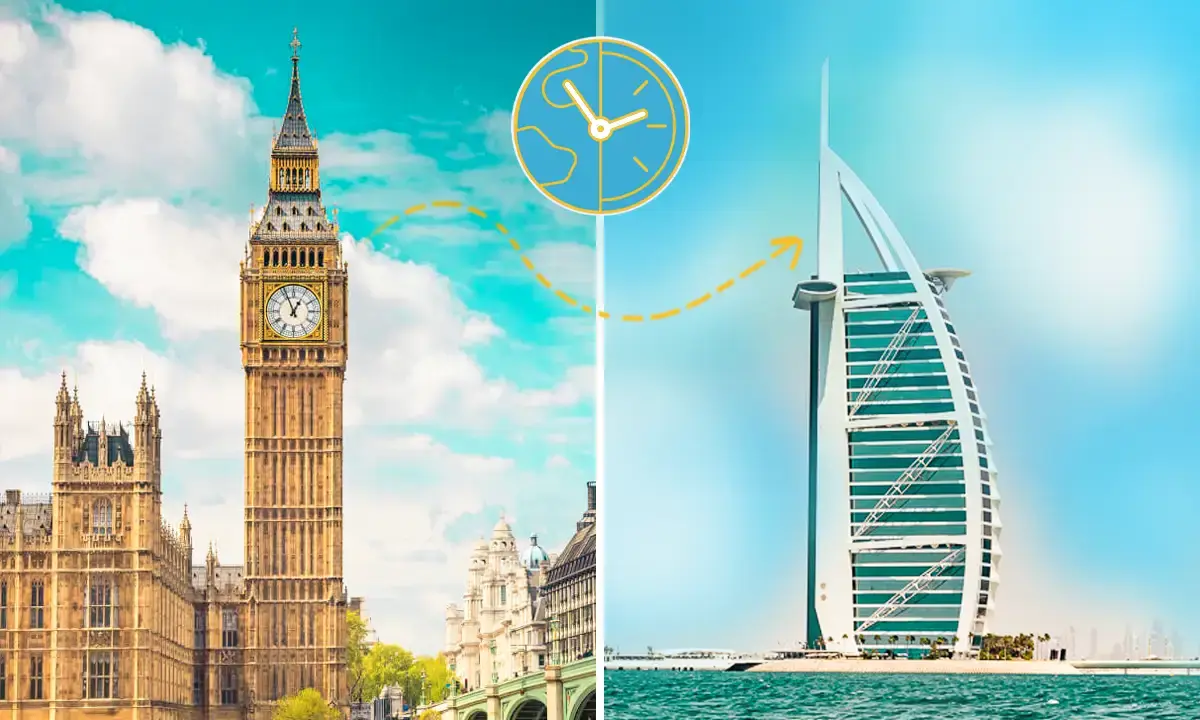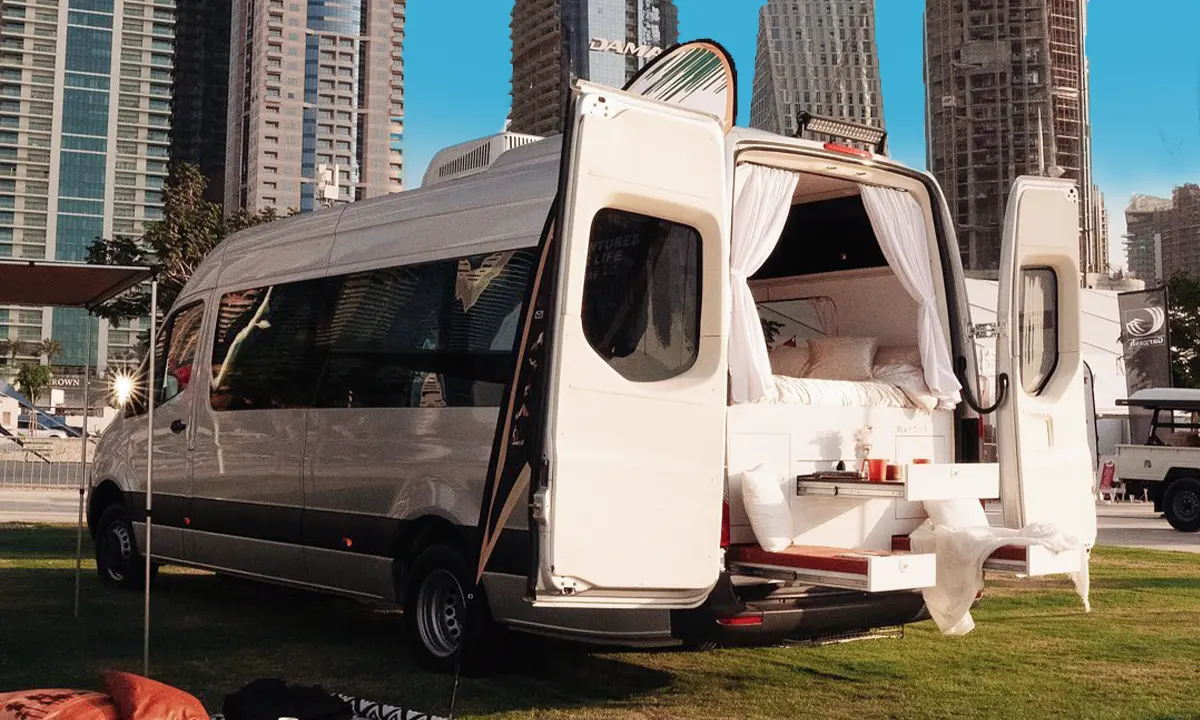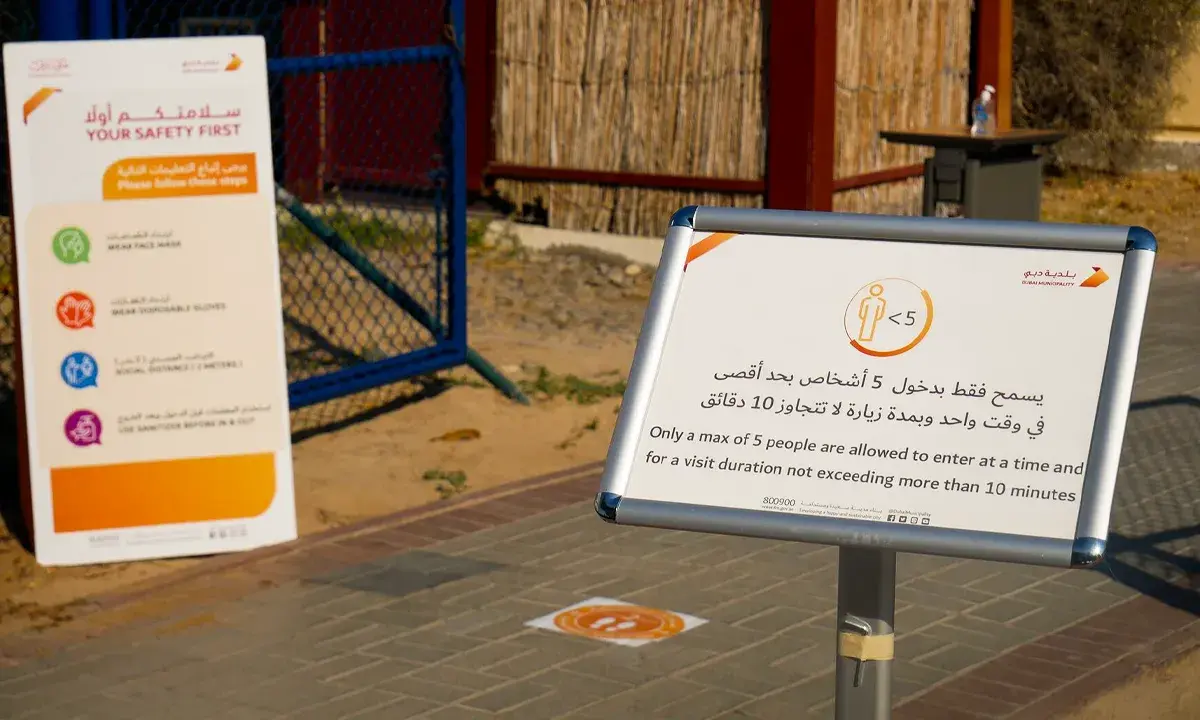Iran is known as a four-season country among tourists and travel enthusiasts. You can experience a completely different climate in a city in Iran than you can anywhere else in this country. You can experience skiing in the Dizin ski resort at the same time, and a few hours later you can walk in the Mesr desert under the scorching sun or drink tea on the Caspian coast under the torrential rains. With that said, if you’re wondering when is the best time to visit Iran, we must say that you can visit the beautiful cities of Iran at any time of year, but visiting some cities at certain times of the month provides a truly memorable experience. In this article, we want to recount the best travel times in Iran and its different cities during the four seasons of the year. The vast country’s climatic differences, cultural events, and historical attractions might make you wonder: When is the best time to visit Iran? In General, March-May and September-October are the best time to go to Iran. In this post, we’ll break down the country’s seasons, highlight key festivals, and offer some pointers to ensure you make the most of your Iranian adventure.
Average Temperatures in Iranian Cities
| City | Average Temperature (°C) Winter | Average Temperature (°C) Summer |
|---|---|---|
| Tehran | 5 | 32 |
| Isfahan | 6 | 35 |
| Shiraz | 8 | 37 |
| Mashhad | 4 | 31 |
| Tabriz | -1 | 30 |
| Ahvaz | 14 | 45 |
| Yazd | 8 | 37 |
Spring (March to May)- When visit Iran?
- Weather: Spring is often considered the best time to visit Iran, especially between late March and early May. Temperatures are moderate, and nature is in full bloom, particularly in regions like Isfahan, Shiraz, and the Alborz Mountains.
- Norooz: Coinciding with the first day of spring, Norooz (Persian New Year) is a significant festivity spanning two weeks. It’s a time of family reunions, colorful table settings (Haft Seen), and outdoor picnics.
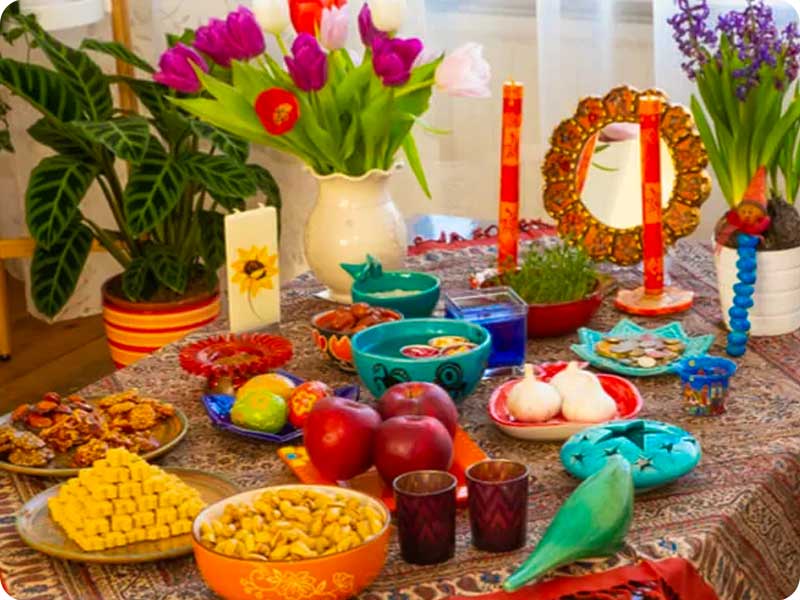
Summer (June to August)
- Weather: Northern regions like the Caspian Sea coast remain cool and are popular summer retreats. However, central and southern parts can be quite hot, especially during midday.
- Desert Tours: For those seeking a unique experience, the deserts of Dasht-e Kavir and Dasht-e Lut offer mesmerizing landscapes, albeit with high temperatures. Night-time desert excursions are especially magical during this period.
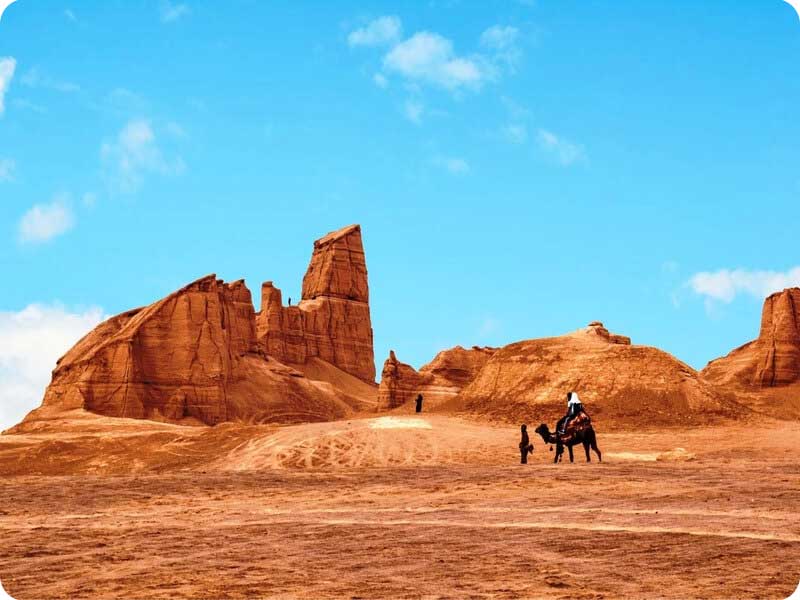
Autumn (September to November)
- Weather: Fall brings a kaleidoscope of colors, especially in the forested regions of the north, such as Golestan. The weather cools down, making it ideal for sightseeing and outdoor activities.
- Saffron Harvest: Visit Khorasan in November, and you’ll witness the saffron harvest, a vibrant and aromatic affair.
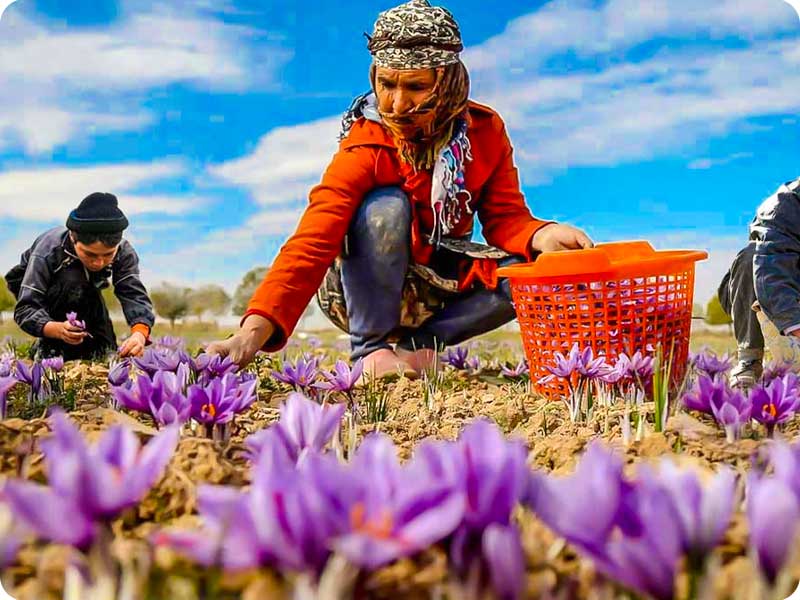
Winter (December to February)
- Weather: If you’re a fan of winter sports, the mountains near Tehran, like Dizin and Shemshak, offer excellent skiing opportunities. However, southern parts, like Kish Island, remain pleasantly warm, making it perfect for beachgoers.
- Yalda Night: Celebrated on the longest night of the year, Yalda is a time when families gather, recite poetry, and eat pomegranates and watermelons, symbolizing the triumph of good over evil.
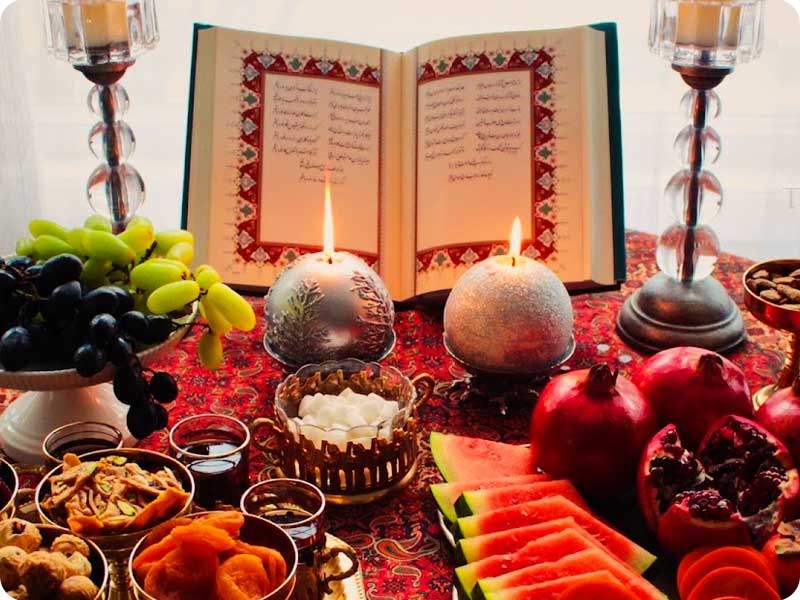
Which cities of Iran are the best for visiting in which seasons?
| Cities | Seasons |
|---|---|
| Persian Gulf Island | Winter |
| Tehran | Spring |
| Isfahan | Spring |
| Shiraz | Spring |
| Mazandaran | Spring |
| Gilan | Autumn |
| Mashhad | Spring |
| Tabriz | Summer |
| Ardabil | Summer |
| Yazd | Winter |
| Kermanshah | Summer |
| Mahallat | Summer |
| Ahwaz | Autumn |
Top destinations in Spring in Iran
- Kashan
Kashan is one of the oldest cities in Iran and is located in the central and tropical regions of the country. The best time to visit it will be in the spring to see the charms of this historic city in the spring weather. Because Kashan’s rose watering takes place in the spring, the best time to visit this city is in May, which attracts many tourists.
- Shiraz
Anyone who does not go to Shiraz in the spring and does not breathe in the cool air and the smell of orange blossoms has not experienced the real spring. Shiraz gardens are full of flowers with spectacular views in this season and captivate the heart of every viewer.
- Mahallat
Mahallat is known as the “city of flowers” and is referred to as the Netherlands of Iran. Spring is the best time to visit the gardens and flower gardens of this city.
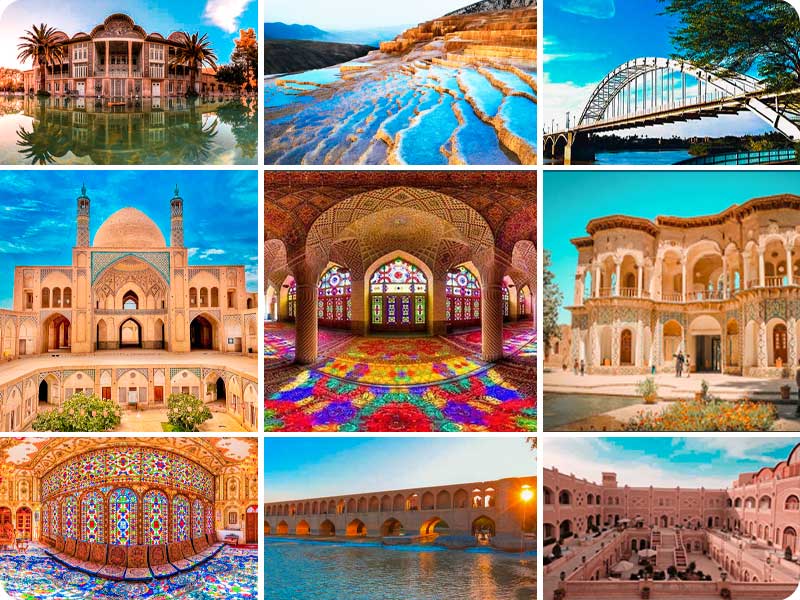
Top destinations in Summer in Iran
- Kermanshah
This mountainous city of Iran has very pleasant weather in the summer, and with its attractive historical and natural attractions, it is one of the best tourist destinations in the summer.
- Ardabil
This lush and pleasant city in Iran is one of the best destinations for summer travel. By traveling to this city, you can easily explore different parts of the region by car. Of course, for the convenience and security of travel, it is better to use car rental services in Iran.
- Tabriz
Known for its pleasant summer climate, Tabriz offers historical sites and scenic landscapes. The Tabriz Bazaar, a UNESCO World Heritage site, and El Goli Park provide a blend of culture and relaxation.
Gilan
Located along the Caspian Sea, Gilan has beautiful beaches, misty forests, and rice paddies. The town of Masouleh, known for its stepped village architecture, and the stunning Rudkhan Castle are highlights.
Mazandaran
Another Caspian Sea region, Mazandaran combines mountainous areas and coastal views. The Hyrcanian forests, listed as a UNESCO site, and Ramsar’s nature are popular for hiking and relaxation.
Top destinations in Autumn in Iran
- Mesr desert
One of the best tourist destinations in Iran in autumn to avoid the scorching heat of the desert is the central deserts of Iran, including the Mesr desert.
- Shahroud Cloud Forest
Many people know the city of Semnan because of its historical attractions, while this forest, like a jewel in the heart of this city, is a great nature destination, especially for friendly groups.
Gilan
Gilan’s lush forests along the Caspian Sea turn into a colorful tapestry in autumn. The Masal forests and the ancient village of Masouleh, with its distinctive terraced houses, are especially scenic in fall.
Mazandaran
Known for its misty forests, Mazandaran’s Hyrcanian forests become particularly stunning in autumn. Coastal towns along the Caspian Sea and the Alborz mountain range offer both beach and forest experiences with cooler, crisp air.
Ahwaz
As temperatures cool down, Ahwaz becomes more pleasant to explore. Visitors can enjoy the unique cultural heritage of Khuzestan Province, as well as natural spots like Shadegan Wetlands, a haven for birdwatching in autumn.
Lorestan
Famous for its waterfalls and mountainous landscapes, Lorestan is breathtaking in autumn. Bisheh Waterfall and Oshtorankuh Mountain turn vibrant with autumn hues, offering great spots for hiking and photography.
Kermanshah
Autumn is an ideal time to explore Kermanshah’s ancient heritage, as well as its pleasant countryside. Key historical sites like the Taq-e Bostan rock carvings and the UNESCO-listed Bisotun inscription are especially beautiful surrounded by autumn scenery.
Isfahan
Known for its cultural treasures, Isfahan’s architecture and gardens, like Chehel Sotoun and Si-o-se-pol Bridge, are charming in the autumn light. The cooler weather is ideal for leisurely sightseeing in this culturally rich city.
Top destinations in Winter in Iran
- Persian Gulf Islands
The best time to travel to the Iranian islands is in the winter, so you can enjoy exploring them and seeing their natural wonders.
- Chabahar
Many people believe that Chabahar beaches are one of the best nature tourism destinations in Iran, and the best time to travel in Iran in this hot and humid region is winter.
Tabriz
Known for its cold winters, Tabriz transforms into a snowy wonderland, ideal for those who love winter landscapes. The city’s historical sites, like the Tabriz Bazaar and Blue Mosque, are stunning when blanketed in snow, creating a picturesque experience.
Yazd
Winter is a great time to visit Yazd, as its desert climate becomes milder, allowing comfortable exploration of this ancient city. Famous for its wind towers, adobe architecture, and the Zoroastrian Fire Temple, Yazd is enchanting in the winter sunlight.
Shiraz
Known for its warm winters, Shiraz offers a mild and pleasant climate for sightseeing. This is the perfect season to visit the UNESCO-listed Persepolis, the Tomb of Hafez, and the Eram Garden, all without the crowds and heat of summer.
Mashhad
Mashhad, Iran’s spiritual capital, is a popular winter destination as pilgrims and tourists come to visit the holy Imam Reza Shrine. The cooler weather adds to the peaceful atmosphere and provides a comfortable climate for sightseeing.
Dizin Ski Resort (Alborz Mountains)
Located near Tehran, Dizin is one of the largest ski resorts in Iran, perfect for winter sports enthusiasts. With world-class facilities for skiing and snowboarding, it’s a popular choice for locals and tourists alike to enjoy Iran’s mountainous winter beauty.
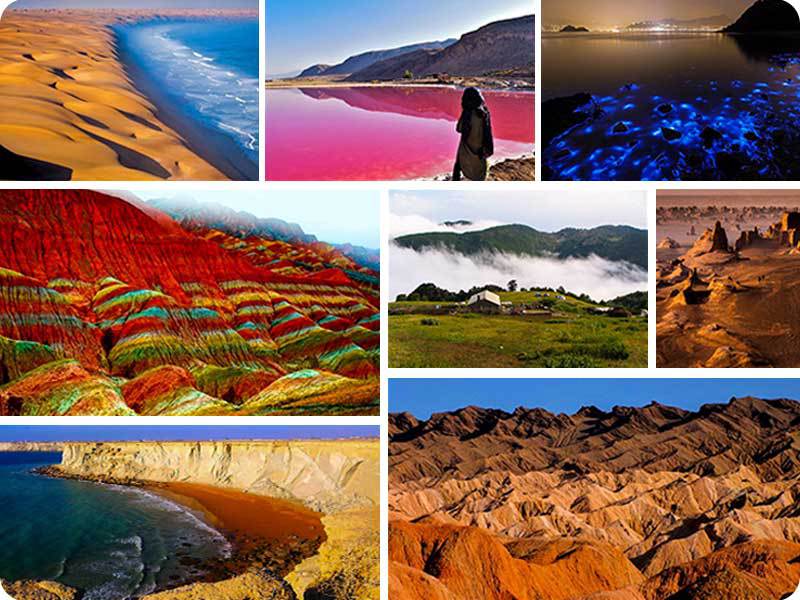
What are the Travel Tips for visiting Iran?
- Dress Code: Regardless of the season, remember that Iran has a dress code. Women should wear a headscarf and long sleeves, while men should avoid wearing shorts in public.
- Local Customs: Familiarize yourself with local customs, especially during festivals. A little respect goes a long way in enhancing your travel experience.
- Currency: While credit cards aren’t widely accepted, Iran has a vast network of ATMs. Always carry some cash, especially when traveling to remote regions.
Last word
In conclusion, every season in Iran offers a unique charm. Your ideal time to visit will depend on your preferences, be it the springtime bloom, summer’s desert allure, autumn’s colorful canvas, or winter’s snowy embrace. Whichever time you choose, Iran’s rich history, culture, and warmth are bound to make your journey unforgettable. Given Iran’s vast expanse and considerable distances between its iconic sites, renting a vehicle in Iran emerges as the most efficient and enriching way to truly uncover the nation’s diverse landscapes and cultural treasures.
FAQ
During winter, the mountains near Tehran, especially Dizin and Shemshak, are popular for skiing.
Iran uses the Iranian Rial as its currency. Credit cards aren’t widely accepted, so it’s advisable to carry cash. ATMs are, however, widely available.
The saffron harvest takes place in Khorasan in November, providing a vibrant and aromatic experience.
Norooz is the Persian New Year, coinciding with the first day of spring. It’s a two-week celebration marked by family reunions, colorful table settings known as Haft Seen, and outdoor picnics.
Iran is a four-season country, offering a range of climatic experiences. Generally, spring (March to May) is considered ideal due to moderate temperatures and nature being in full bloom. However, each season offers unique experiences in different regions, making Iran a year-round destination.
